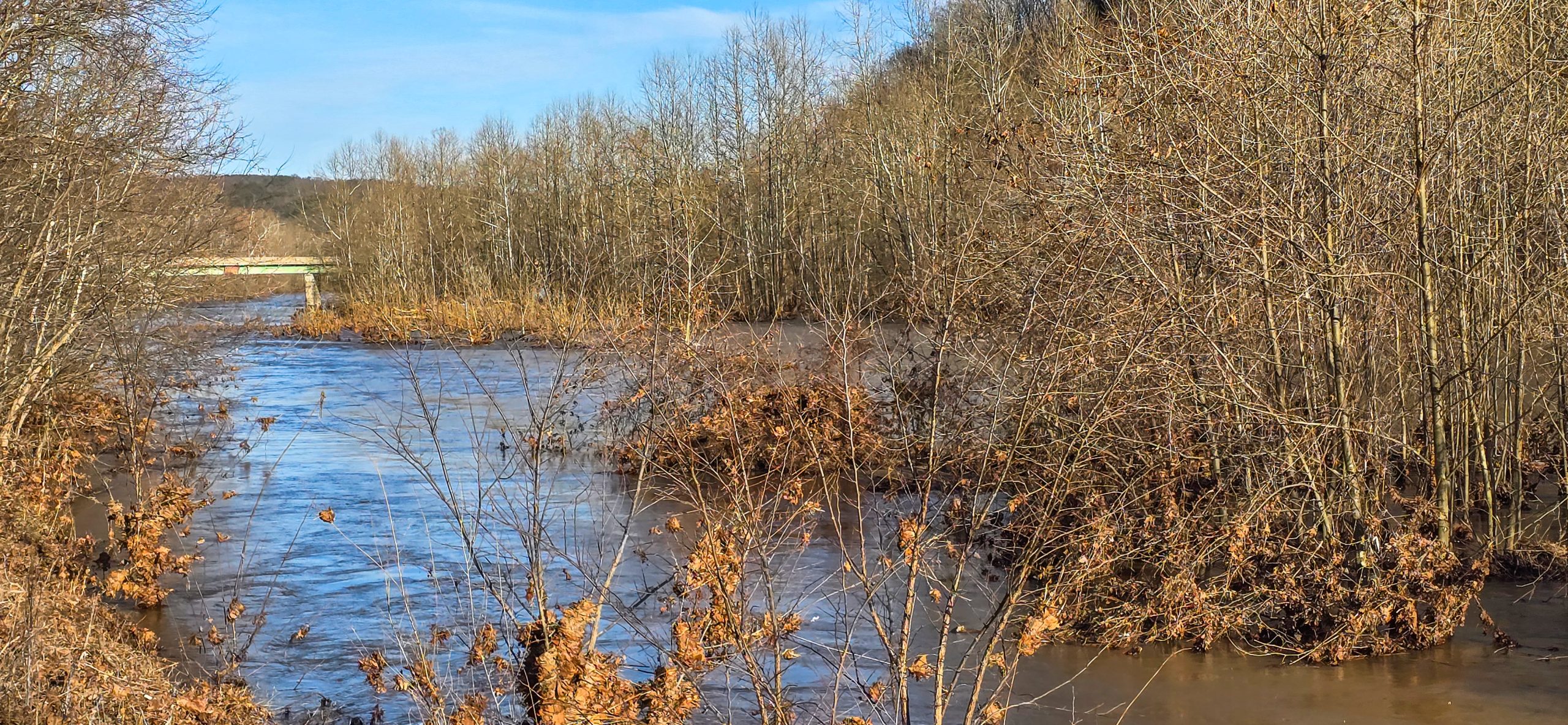
By Stephen Smoot
With wild winter weather bringing in seemingly a different headache every week, from bitter cold, to snow accumulations of a foot or more, to floodwaters forcing rivers over banks, local officials continue to signal concerns over potential threats to key infrastructure.
One major threat, identified by both County Commissions and Gerald Sites from the Potomac Valley Conservation District, lies in a buildup of rocks, sediment, and even brush and scrub trees growing between Welton Park and the US 220 bridge.
“In my opinion,” says David Workman, President of the Hardy County Commision, “it will continue to grow, fill in and when the next big flood event comes we lose an important bridge and roadway until it can be put back.”
Both Grant and Hardy counties rely heavily on the bridge for their needs. Residents go back and forth between Moorefield and Petersburg for work, shopping, recreation, or to visit family and/or friends. The loss of the bridge would force traffic between the two county seats to detour for much longer periods of time over backroads.
Workman fears that a major flooding event, such as the Flood of ‘85, could threaten the structural integrity of the bridge.
“The threat is from the potential blockage,” explained Workman, “that would possibly be made worse by having this mass of sediments, rock and vegetation should other debris from a major flood accumulate in this ‘bottleneck’ at the same time could as in the 1985 event, take out the bridge.”
Grant County Commission President Kevin Hagerty agrees with Workman. As he says “There is an obvious build up of debris at the bridge that must be addressed in the near future. This debris has the potential to eventually increase the likelihood of flooding, or even worse threaten the soundness of the bridge itself. “
Hagerty’s concerns extend to the problems that would plague area traffic and commerce should an event cause the bridge to fail. He says “Thousands of people utilize the bridge daily, not only for personal reasons, but for means of commerce as well. This situation is of the utmost importance for citizens of Grant County, Hardy County, and others in their daily lives.”
Hagerty points out that almost no alternative route, including Rig Road or Corridor H and Patterson Creek Road, exists. Neither Rig Road nor the combination of backroads that would bring traffic through Dorcas can handle the many heavy trucks that use US 220 daily and using Corridor H adds significant time to a trip between the two cities.
Workman stated that, based on some communications with the West Virginia Department of Transportation, that “they do not believe there is much of a concern. Hagerty, however, noted that “thinking of the worst case scenario is important though, to ensure that we have a plan before we get to that point.”
Elected officials have met with those from the State and the federal government to express concerns and seek assistance. As Workman shared, “representatives from the City of Petersburg, the Grant County Commission and Hardy County Commission have met with DOT, NRCS, DNR and others including communication with the Corp of Engineers to get input on the removal of the debris above and below the bridge.”
However, “we have not had much follow up from any but DOT so far,” he said.
Despite the bridge’s location in Hardy County, Grant County officials understand that it serves as a vital link between Petersburg and points east. Hagerty stated that “the Grant County Commission is willing to assist in any way possible, if the bridge is deemed to be critically threatened by experts on the matter.”
Workman explained that a contractor firm has made itself available if and when the project to remove the debris ever takes shape. The company would perform the work to extract the rock and sediment. That said, a large stand of trees and other vegetation choked with the flotsam and jetsam of natural and man-made items floating down the river must be removed before the rock and sediment bed from which it grows can be accessed.
Additionally in other cases on the South Branch River and its two main forks where property owners, local governments, or the State have sought to remove similar obstacles, environmental regulations and mandates have slowed or even prevented vital work.
Since the obstacle started to form after the Flood of ‘85 and has gradually expanded ever since, it would pose a significant task to remove.
Workman’s concerns about the South Branch and its forks extend beyond this issue. He explained that when the rivers rise to near, at, and above flood level, they sweep away countless valuable tons of nutrient rich soils needed for agriculture. At times, large pieces of farmland simply disappear as the river erodes banks that need stabilization.
“Some of these erodible areas pose threats to our recreational users of our waterways,”stated Workman, who went on to add that “there is not a lot of money available locally or in the state to do what needs to be done to stabilize these stream and river banks to prevent this soil loss and erosion.”







